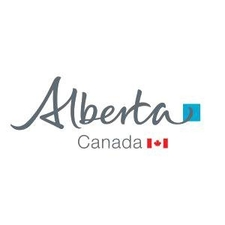LOCATION
Type of resources
Topics
Keywords
Contact for the resource
Provided by
Formats
Representation types
Update frequencies
status
-

This dataset is produced for the Government of Alberta and is available to the general public. Note that the distribution contact is different for the general public than for Government of Alberta ministries. Please consult the Distribution Information of this metadata for the appropriate contact to acquire this dataset. The National Topographic System of Canada (NTS) is a national mapping reference grid defined by Natural Resources Canada (NRCan) that is based on degrees of latitude and longitude. Starting at the Prime Meridian and at the equator, the 1:250 000 grid is formed by intersecting every degree of the meridians with every two degrees of parallels. Each polygon in the grid is designated with a two digit number and a single letter (Example 83H). The province of Alberta is covered by 45 complete and 17 partially complete 1:250 000 NTS blocks.
-

This dataset is produced for the Government of Alberta and is available to the general public. Note that the distribution contact is different for the general public than for Government of Alberta ministries. Please consult the Distribution Information of this metadata for the appropriate contact to acquire this dataset. The National Topographic System of Canada (NTS) is a national mapping reference grid defined by Natural Resources Canada (NRCan) that is based on degrees of latitude and longitude. Starting at the Prime Meridian and at the Equator, the 1:50 000 grid is formed by intersecting every 1/4 degree of the meridians with every 1/2 degrees of parallels. It can also true that the standard 1:250 000 NTS block is broken down into 16 1:50 000 blocks that a numbered south to north alternating east to west then west to east from one to 16. Each polygon in the grid is designated with a two digit number. a single letter and two additional numbers (Example 83H08). The province of Alberta is covered by 670 complete and 131 partially complete 1:50 000 NTS blocks.
-

This dataset is produced for the Government of Alberta and is available to the general public. Note that the distribution contact is different for the general public than for Government of Alberta ministries. Please consult the Distribution Information of this metadata for the appropriate contact to acquire this dataset. The National Topographic System of Canada (NTS) is a national mapping reference grid defined by Natural Resources Canada (NRCan) that is based on degrees of latitude and longitude. Starting at the Prime Meridian and at the Equator, the 1:50 000 grid is formed by intersecting every 1/8 degree of the meridians with every 1/4 degrees of parallels. It is also true that the standard 1:20 000 NTS block is broken down into 4 1:20 000 blocks that are labelled by quadrant. Each polygon in the grid is designated with a two digit number. a single letter. two additional numbers and a two letter quadrant value (Example 83H08NE). The 1:20 000 NTS grid was developed to support the Provincial Digital Base Mapping Project and is not part of the formal NRCan NTS program. The province of Alberta is covered by 2838 complete and 269 partially complete 1:20 000 NTS blocks.
-

The Alberta Regeneration Information System (ARIS) requires a unique identifier assigned to a cutblock to enable tracking within ARIS. This number is generated from a point roughly derived from the centre of the cutblock. The number is a concatenation of the point's legal description plus a grid cell number. The format is MRRTTTSSGG where M - Meridian, RR - Range, TTT - Township, SS - Section, GG - grid cell. The MRRTTSS information is derived with reference to the Alberta Township System. The grid cell is derived from a 10 by 10 grid that is overlaid on the section that the centre of the cutblock is contained in. Grid cells are numbered between 00 - 99 with the grid origin at the bottom left corner of the section and anchored to the centre of grid cell 00. The first digit represents the grid column and the second digit is the grid row of the 10 by 10 matrix. Note that in some cases a letter may be appended to the end of the opening number where an opening number had to be split between two cutblocks for some reason. For example, cutblocks may have the same basic opening number but one is differentiated from the other with one having an A and the other having a B appended to the end of the base opening number.This dataset contains all the potential opening numbers in the Green Area of the province, either as a whole or by Forest Management Unit (FMU).
 Arctic SDI catalogue
Arctic SDI catalogue